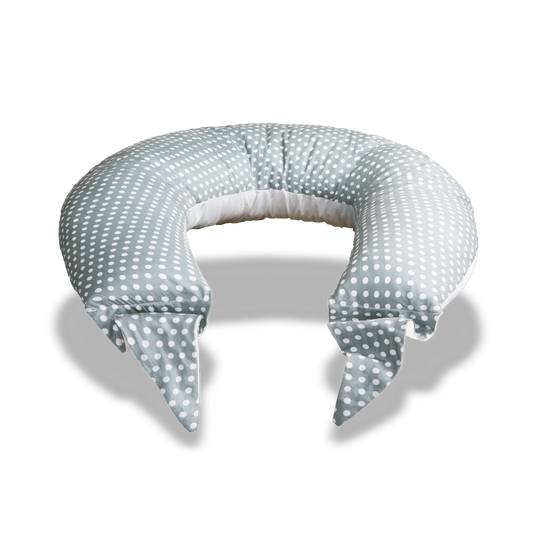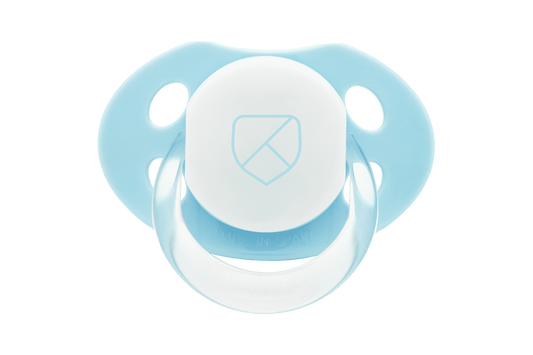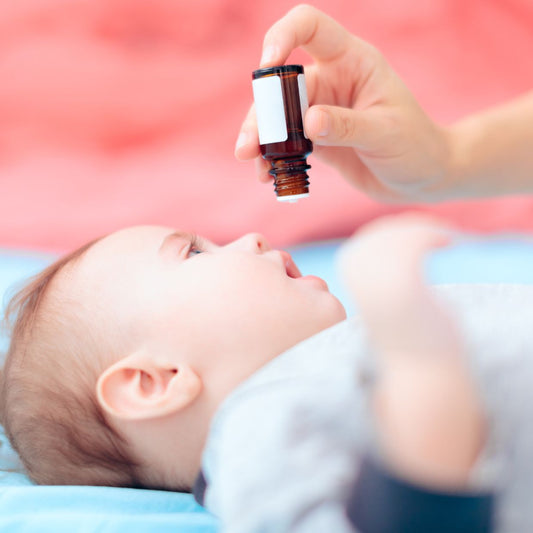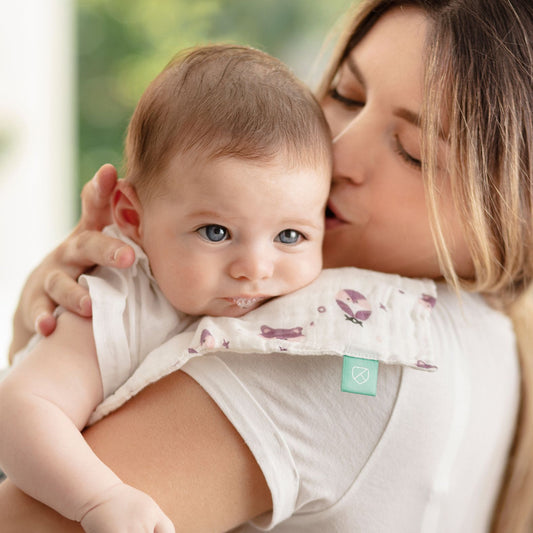You've just changed them and then suddenly they bring their milk up all over their clean sleepsuit and whoever’s holding them: this is regurgitation.
It's nothing to worry about, as it's actually perfectly normal for babies to regurgitate. This is called gastro-oesophageal reflux, and it is when the liquid content of the stomach refluxes into the oesophagus, causing posseting ofmilk mixed with saliva. It occurs because a baby’s digestive system has not yet fully matured.
What is the best anti-regurgitation position for babies? We take a look below.
Why do babies suffer from regurgitation?
Regurgitation in infants occurs because their digestive system is still in the process of developing and, therefore, still immature.
The main culprit for regurgitation is the cardia, a valve which connects the stomach and oesophagus and closes once food has passed through, this prevents stomach contents from coming back up. As the cardia valve is not yet closed properly in infants, a backflow of milk occurs
This is why, in most cases, regurgitation is only a temporary problem that disappears on its own once the baby is a few months old.
Regurgitation usually happens immediately after feeding, but it can sometimes occur a few hours following a feed. In the first instance, any milk that is posseted will be more of a liquid as it has not yet been digested, in the second case, however, it will be more solid and frothy.
What is the difference between reflux and regurgitation?
We often confuse reflux and regurgitation by using both terms indifferently to define the same problem. This is not wrong, as regurgitation always involves reflux. However, it’s worth understanding the difference between the two.
Reflux refers to the passage of gastric contents from the stomach into the oesophagus, it can also occur in adults. It’s extremely common among infants given their liquid diet and the fact that their gastro-oesophageal tract has not yet matured.
In most cases, it is accompanied by regurgitation, which is the posseting of undigested saliva and milk. Therefore, reflux doesn't technically involve any posseting (bringing up milk), unlike regurgitation.
Infants and regurgitation: when to worry?
In most cases, regurgitation is completely normal and causes no real health problems. However, it can indicate a health issue if it appears together with other symptoms such as:
- Weight loss
- A baby is not gaining as much weight as they should
- Vomiting
- Irritability
- Refusal of food
Seek advice from your doctor if you have any concerns.
How to prevent regurgitation
Traditional remedies of the past such as winding your baby after a feed or lying your baby on their side or even on their stomach are not only ineffective, but may also prove harmful to your baby's health.
Babies should always lie on their backs, first and foremost to prevent SIDS. This position is also helpful for regurgitation. Whereas, by lying on their back (in the supine position), it is physically impossible for any spit-up to enter the airways as the trachea (where air passes) is positioned above the larynx (where food passes).
How can you prevent regurgitation?
- Keep your baby upright for about 15 minutes at least after a feed
- Place your baby on a surface with an incline angle of about 30 degrees so as to counteract any backflow of milk resulting from gastro-oesophageal reflux. Bouncers and cribs often come with adjustable backrests.
- Try to feed your baby slowly, perhaps with a few short breaks.
Anti- regurgitation position for breastfeeding
The best position for breastfeeding if your baby suffers from regurgitation is in the Koala position. This is when your baby sits straddling your thigh, or on your hip, with their spine and head upright as they feed.
This position is easier with older babies who are already sitting up on their own, whereas newborns obviously need a lot of support from their mum.

Night-time regurgitation: which position should a baby sleep in?
What should I do if my baby possets milk during the night? The best way to prevent backflow of milk from the oesophagus is to place your baby ontheir back in their crib or cot so that their upper body is elevated by at an incline angle of 30 degrees.
Many cribs and prams come with a reclining backrest. For cots, you can place some towels or a pillow underneath the mattress.
If their head and chest are elevated slightly in relation to the rest of their body, backflow of milk from their stomach is reduced.
Your baby should always lie on their back. This is primarily, to mitigate the risk of SIDS, or cot death. The second reason is that by lying on their back (in the supine position), it is much more difficult for the spit-up to enter their airways. It’s a physical matter, when on their back, the trachea (where air passes) is positioned above the larynx (the tube which connects the mouth to the oesophagus).
On the contrary, in the prone position (on their stomach), the digestive tract is above the airway and the risk of aspiration, in the event of regurgitation, increases.
The safest position for infants is on their back, at least until they learn to roll over by themselves. This is the reason why the World Health Organisation strongly recommends that babies should always be placed on their backs.
The supine position (lying on their back) increases the risk of Positional Plagiocephaly, commonly known as Flat Head Syndrome. Would you like to find out how you can prevent or treat it? Read the advice from Healthcare Professional Maria Antonietta Bonanno, an expert in Positional Plagiocephaly.









